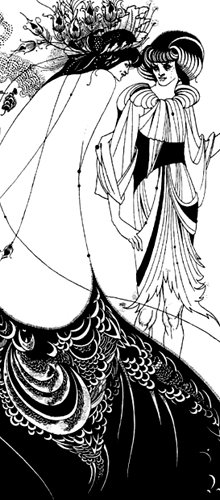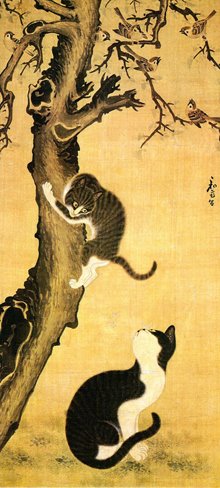Monday, June 14, 2010
Hidden Message Inside Lincoln's Pocket Watch
Two watchmakers managed to engrave secret messages inside President Lincoln's watch. It seems even the watchmakers were divided during the Civil War.
Jonathan Dillon, an Irish immigrant and a watchmaker, was repairing Lincoln's watch at the time when he heard the news that Fort Sumter was attacked. So he unprofessionally dared to scratch in some of his personal writings on the watch of a very important client. The message reads as follows:
Jonathan Dillon April 13, 1861. Fort Sumter was attacked by the rebels on the above date. J Dillon
April 13, 1861 Washington Thank God we have a government. Jonth Dillon
Then another watchmaker came a few years later and wrote his counter message:
L.E. Grofs Sept 1864 Wash D.C.
Jeff Davis
The messages are cleverly etched on the back of the movement, so when the dial is assembled back in, nobody really can see them.
These messages were only rediscovered after Dillon's descendent, Doug Stiles, contacted the Smithsonian about his family legend. An elderly watchmaker named George Thomas did an honor of reopening the watch on March 10th, 2009, while Dillon's descendent and others excitedly waited to witness "the moment of truth".
President Lincoln probably would never have known that his watchmakers had intentionally damaged his watch, or that the name Jeff(erson) Davis was so close to him during the war.
Another bitter yet intriguing sidenote in history, I suppose.
Wednesday, April 21, 2010
The Watch of Korea's Last Emperor
Made in 1910, the watch weighs 75g and is 49mm in length. The back of the watch case has an engraving of Ihwamun (이화문; 李花紋), the Imperial Seal of the Korean Empire; the name of the master watchmaker is also engraved inside the case. This suggests that Sunjong specially ordered this watch from Vacheron Constantin back in 1910. Because the watch is identical to the one that appears on the photo album of Sunjong's funeral, it is without doubt genuine.
Back in the late and the early 20th century, mechanical pocket watches and clocks were viewed by Koreans as one of the mesmerizing and exclusive modern marvels offered by the western civilization. It may be not so surprising, then, that Sunjong had great affection towards them.
According to historic records, Sunjong collected great number of timepieces and went on to creat his own private clock hall in Changdeokgung Palace. He was said to greatly enjoy the moment when all his clocks and (repeater) watches simultaneously sounded their hours with different sounds.
During the time when Korea was controlled and dominated by the Japanese, Sunjong, dismally the last monarch of the nation that longer existed, might have found bitter solace by letting his timepieces to measure the flow of history that was no longer under his control. He died in 1926, but the watch survived.
Sold at 125,000,000 won (112,750 USD), the watch is now at the hands of an unnamed private collector. I hope he does appreciate the sadness behind this special relic.
Monday, March 8, 2010
Monday, March 1, 2010
Happy 200th Birthday, Chopin!
Thursday, February 4, 2010
A Century-Old Chickering Upright



While web surfing, I spent today eyeing this old relic for sale: an upright piano. It was made in 1885 by famed Chickering & Sons (serial #71147).
Adorned with traceries and beautifully crafted in rosewood, it reticently echoes a romance, perhaps, of La Belle Époque. I particularly like its fallboard letterings.
They just don't make them like they used to.
Saturday, January 23, 2010
A Century-Old Knabe Piano Ad.


I recently purchased a very old opera booklet from the Bostonians Opera that dates back to 1889.
The most interesting part about it is that it contains a Knabe advertisement on the back, as shown above, with a beautiful piano etching done by Allen Eng. and a reproduction of a recommendation letter by Hans von Bulow.
When I first purchased it, I did not know that the letter was printed on the back of the advertisement page. After spending some time deciphering his handwriting, I was able to read its content. It reads:
"The Knabe pianos which I did not know before have been chosen for any present concert tour in the United States by my Impresario and accepted by me on the recommendation of my friend Bechstein acquainted with their merits. Had I known these pianos as now I do I would have chosen them by myself as their sound and touch are more sympathetic to my ears and hands than all others of the country.
New York 6th April 1889
Dr. Hans von Bulow
To the William Knabe and Co."
This letter and an advertisement were created about a century from today.
The proud grand piano shown is no longer for sale, nor does its maker exist.
Time is a cruel thief.
Tuesday, January 19, 2010
The Start of the Second Semester
I felt tired.
It was a gloomy day, and the future seemed ever so insecure that I hesitated buying my own textbooks.
There was I, unable and incapable to decide between the two worlds, lacking confidence of what's to come.
Classes seemed ominously difficult.
Sigh. Forever Sigh.
Saturday, January 2, 2010
Seoul Station's Dome Complete!



Today I finally topped off my Lego model of Seoul Station. It was quite a challenge, but I am happy with the final design. I was able to finish it because the updated version of Lego Digital Designer is a lot faster and does not give error messages.
Now I have to work on the minor details and side wings of the station.
Subscribe to:
Posts (Atom)














